By: Bita Nayeri
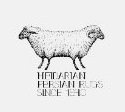
Handmade Persian carpet has a long history. So long that people around the world know Iran and Iranians only by this colorful and magnificent product and its originality and beauty. For this reason, the Persian rug, apart from all else, has become part of the identity and prized treasure of yesterday, today and tomorrow of Persians. Yet, this self-dependent and original brand has not been recognized by us Iranians as it should and has not been valued at par with its import and place in the world at large. At Heidarian Carpets, our dream and our goal are to realize this concept and further reinforce this ranking in a modern and contemporary way, both in Iran and around the world.
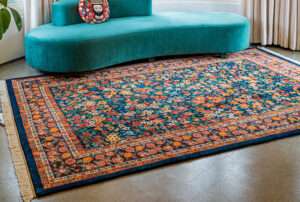
The story of Heidarian Carpets which today maintains its head office in Tehran, goes back to 1890, when the Heidarian family started a modest-sized Persian rug workshop. Today, after 130 years of hard work and business acumen by members of this tightly knit family enterprise, the fifth generation of Heidarians continues its tradition of producing high quality hand-woven rugs and carpets with an eye also on improving the livelihoods and quality of life of those artisans whose work defines the industry.
Heidarian’s Persian rugs are woven by both nomadic tribe members as well as local weavers in villages and town workshops and are generally made in four major rug centers of Iran namely: Chaharmahal-o-Bakhtiari, Kurdistan, Fars and Azerbaijan provinces.
Along with reflecting the great history of Iran, the culture of its people and the penchant of modern Iranian art toward abstraction and fresh ideas, Heidarian’s rugs are characterized by their craftsmen’s techniques, the use of high-quality materials, truly natural and elaborate colors, and innovative patterns exclusively designed for Heidarian Carpets.
These qualities, along with the company’s dedication to the value of craftsmanship has taken Heidarian Carpets far in the world of Iranian art and crafts. It is therefore no surprise that currently a larger circle of art enthusiasts around the world is welcoming, admiring and enjoying Heidarian’s artistic heritage.
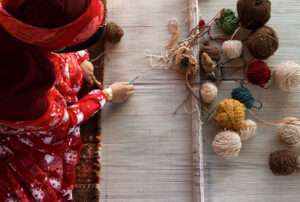
Arash Heidarian is the current CEO of Heidarian Persian Rugs. He took over business in 2006 after his father, Iraj Heidarian, and continued the family tradition while also introducing a new collection of Persian contemporary rugs. Keeping to the tradition of high quality and standards of Heidarian’s rugs, the modern collection represents a variety of patterns influenced by fresh ideas and subjective concepts of young designers. Today, Heidarians collections incorporate over 22 different categories in a variety of designs and sizes.
Although Heidarian Carpet is rooted in the original culture of carpet weaving in Bakhtiari tribes, over the decades it has expanded these roots from Tabriz to Kurdistan and from Kashan and Isfahan to the creative tribe of Qashqai and beyond. The company has for generations solicited the cooperation of artists and master carpet weavers of each region to continuously re-imagine the ancient designs. At the same time, Heidarian Carpet has made every effort to improve the craftsmanship of the artisans, so that with their direct participation in the weaving and production process, the brand’s carpets have both traces of the original carpet weaving art of the past while being in line with today’s modern tastes.
All components of the original and handmade Persian carpets are rooted in the nature of Iran, so Heidarian Carpets considers protecting the environment and natural habitat of the homeland as an inseparable part of its principles. As such, any action that causes any harm to the earth and its beauty is absolutely prohibited.
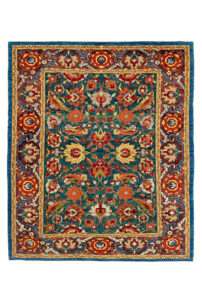
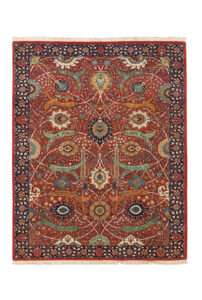
In its 130 years of continuous activity, Heidarian Carpets has directly created employment for thousands of artisans and craftsmen involved in the weaving of handmade carpets throughout the country, both in villages and cities, which has led to the improving of the quality of life in local communities.
The prosperity and revival of this original Iranian hand-woven art form prevents the emptying of villages and the forced migration of their inhabitants and members of nomadic tribes to larger cities where they are naturally marginalized. As these artisans realize that their hand artwork, sealed with the trusted signature of Heidarian Carpets, has refined and sophisticated followers throughout Iran and the world, they enjoy their work and do it with more enthusiasm and pleasure.
At Heidarian Carpets, our goal is to further expand this culture of reciprocal appreciation and recognition, and enhance the day-to-day prosperity and value of Persian handmade carpets throughout Iran and the world.
Our vision and our main ambition that we strive to achieve is to bring the value and credibility of the Persian handmade carpet to the dominant high ranking that it deserves ahead of any competitors anywhere.
Persian carpets, both in terms of production details and in terms of type of design, color and quality of weave have the characteristics and charm that should undoubtedly be considered a benchmark of lifestyle and interior design anywhere around the world.
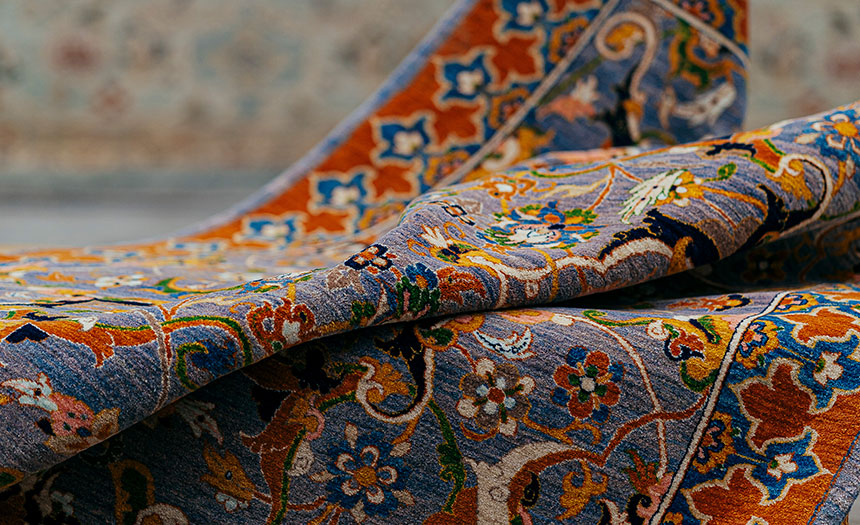
To see one of the most brilliant Persian fashion artworks in brazil, please click on the link.
As such, Heidarian Carpets tries to be a worthy representative and symbol of the original Persian carpet so that its enthusiasts both inside and abroad can proudly choose it and feel pleased and satisfied for owning it.
Heidarian Carpets has been the recipient of many honors and awards in over a century of being in business. Hand-woven collections with the Heidarian signature are recognized and sought after by the most renowned interior designers, architects and collectors from all over the world.
Each year a new jury of specialists from the world of design and carpet industry work together to select the best quality rugs and the most original patterns for carpets, which represent a special combination of design, quality and artisan skills. This coveted award has been presented to Heidarian Persian Rugs 3 times in 2007, 2008 and 2009 for The Best Traditional Nomadic Design (2007- Bibijoon design, 2008-Katoli design, & 2009-Setareh design), The Best Traditional/Formal Carpet Design (2008-Sana design & 2009-Sarvy design) and The Best Urban Contemporary Carpet Design (2014-Baghi design).



